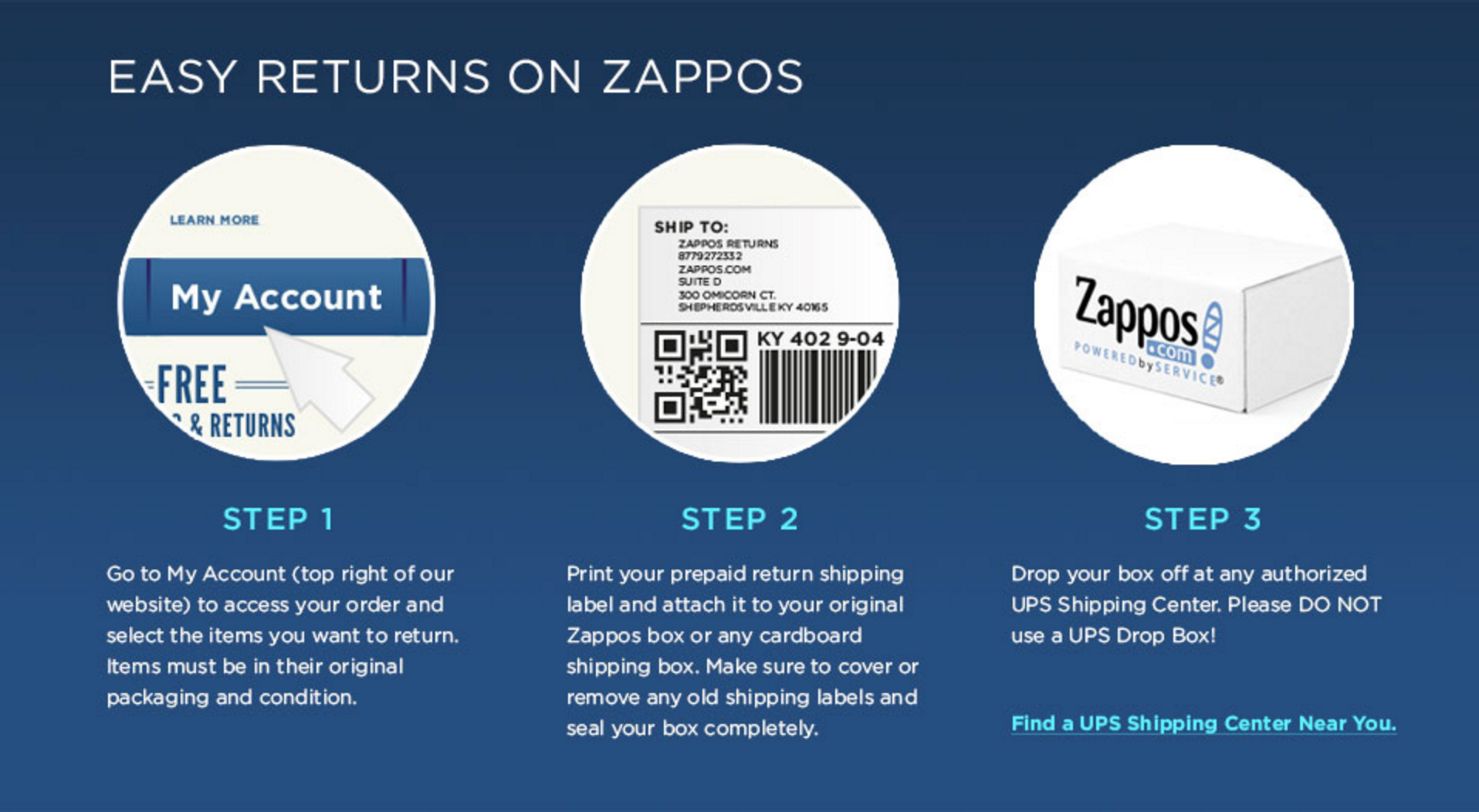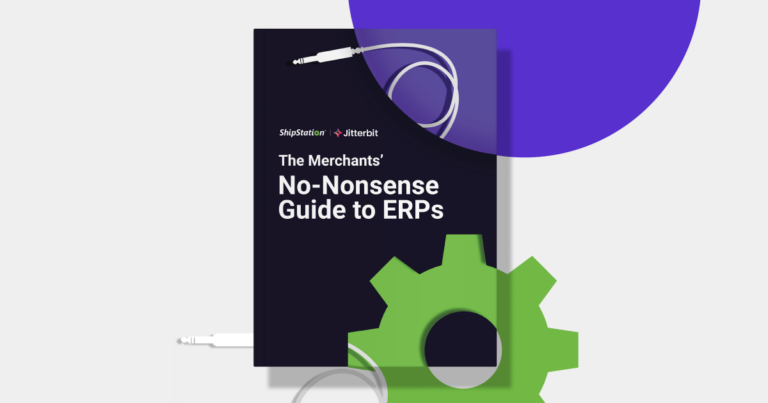What Makes a Great E-commerce Returns Policy?

An integral part of your online business, embracing e-commerce returns can mean more sales. Plus, it doesn’t have to be an expensive process. So if it can help your business AND doesn’t need to cost you an arm and a leg, what does a great e-commerce returns policy actually look like?
Well, it looks a lot like this:

When it comes to e-commerce returns, Zappos reigns supreme for a multitude of reasons (that we’ll get into). But before we get into why we love this policy, we need a bit of a disclaimer: return policies (like shipping policies) are NOT one-size-fits-all. How you handle returns all depends on what you sell. If you’re selling big, bulky engine parts, a liberal returns policy probably won’t fit your strategy. If you sell clothing your policy will be different than someone that sells books—you don’t want your store turning into a library after all.
With that out of the way, let’s examine this policy to find out what works and why.
Easy to Understand
Step 1. Step 2. Step 3. That’s all it is. Zappos gives you everything you need to know about their returns policy in three simple steps. If you scroll a bit more, you get an FAQ about services, your cost, and a specific area about expedited shipping returns (more on that below).
Your customers do NOT want to read paragraphs about your returns process. They want the information to be easily digestible, and going a step further, easy to find. Consider a similar graphic style for your own—images don’t just do better on social media, they do better on your website, too.
Easy to Use
If you’re returning shoes to Zappos, all you need to do is print a label and take the package to a UPS store. Zappos isn’t asking their customers to pay for the label or contact a support team to generate the returns label.
Nope, all their customers have to do is log in to the Zappos account and they can create the returns label—no questions asked—right from there. Zappos doesn’t waste their time or the customers’ when it comes to returns. Customer-initiated means everyone just get to work.
ShipStation has something remarkably similar: the Branded Returns Portal. You link to the Returns Portal from your Branded Tracking Page (which you have to have set-up) and BAM! Your customers can create an e-commerce returns label without needing to contact you or your team.
Encourages Customers to Join Rewards Program
If you’re just an average customer of Zappos, you have access to a stellar e-commerce returns policy: 365-day limit and always free returns shipping. That’s the kind of policy customers crave. But Zappos doesn’t stop there.
Zappos’ rewards program includes two key returns-based features: UPS pick-up and additional time to return your shoes.
On the surface, both of those are super convenient. Zappos will send UPS to your house/work/wherever to pick-up your return. You don’t have to deal with driving, parking, waiting in line, etc., etc., etc.. UPS comes to you and just like that, your shoes have been returned.
But what about that extended returns timeframe? Who really needs more than a year to return a pair of shoes, especially since they have to be unworn and in their original condition? This one is fluff—but that’s a-OK! Zappos positions this as one of their top-tier features. In fact, it’s one of only two features exclusive to their invite-only Elite level.
Conclusion
So what should you be taking away from Zappos? Their e-commerce returns policy is easy to read and understand, they’re not hiding it, they’ve added an incentive to “upgrade”, and it’s entirely customer-initiated. Pick and choose what works for you; for starters, get your branding uploaded to ShipStation, start using the Branded Tracking Page and the Returns Portal. That’ll offer your customers a totally customizable experience that lets them create their own returns.



